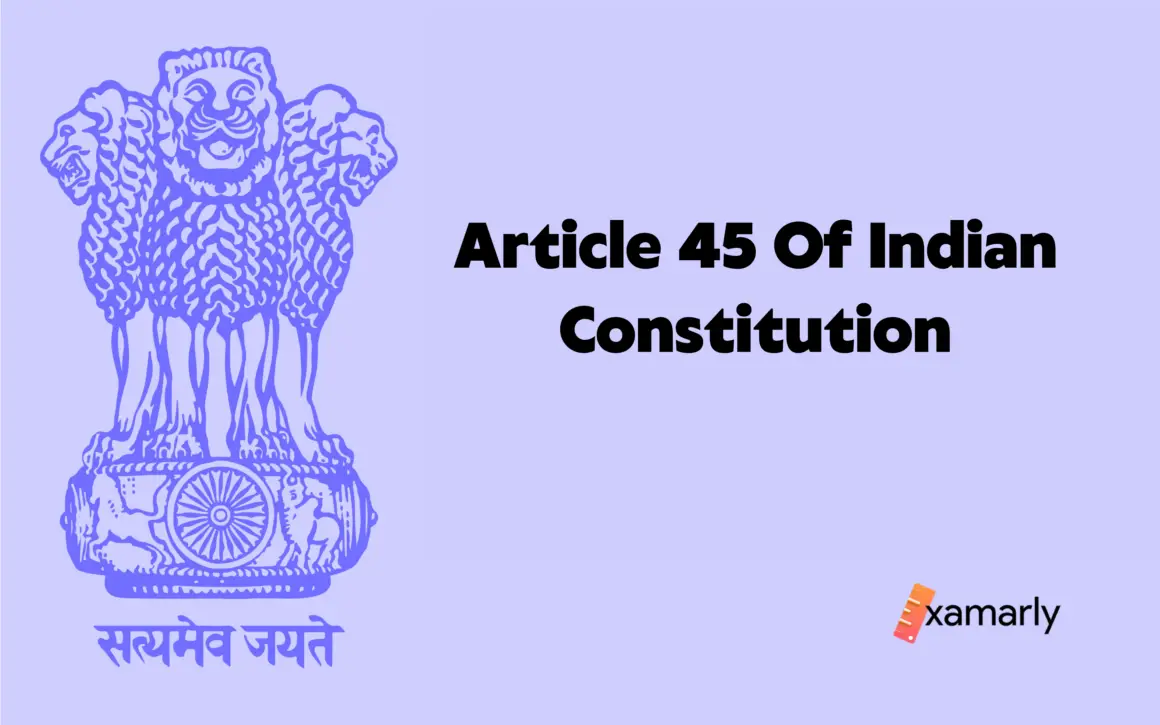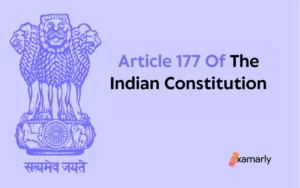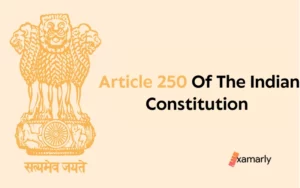Article 45 of the Indian constitution was indeed a pivotal step to shape the lives of Indian citizens and to bring in their life the decent standard of living we see today. The improvements has been remarkable and we are still progressing in terms of living and not just existing. Let us dig into the article to know more about it.
- For the betterment of society, people, and their standard of living, the Directive Principles of State Policy (DPSP) have been put in place.
- These principles aim to create favorable social and economic conditions for the citizens to have a decent standard of life.
- In a nutshell, paving way for the social and democratic welfare of the state is the ultimate aim of the Directive Principles.
- Article 45 revolves around the necessity to impart free-of-charge education. It also talks about making quality education compulsory for children.
- Let us delve deeper into the details of Article 45 and gain a complete understanding of it.
Related – Provision for free and compulsory education for children
What Does Article 45 of the Indian Constitution Say?
- Article 45 of the Indian constitution is a part of the Directive Principles of State Policy (DPSP). It is included in Part IV of the Indian Constitution.
- The Constitution provides that the State will take upon itself the onus to provide free as well as compulsory education for all children. This would continue till they attain fourteen years of age. This shall be done within ten years from the inception of the Constitution.
- For the enactment of the 86th Amendment of the Indian Constitution, 2022, Article 45 has been revised. This was done to restrict its scope for providing primary education up to the age of six years.
- In addition to that, the State shall make every effort to provide all children with early childhood care.
Article 45: A Clarion Call For Children’s Education
- The nation’s system of free and compulsory education was established by Article 45 of Directive Principles of State Policy (DPSP).
- The right to impart education to children is recognized under Article 45, which also directs the state to make elementary education both required and accessible to all children.
- Additionally, it promotes the growth of a variety of secondary school options, such as general and vocational education. It aims to make them accessible to all citizens.
- Article 45 takes the necessary actions, such as enforcing a free education policy and offering financial aid for childhood care when necessary.
See Also – 86th Amendment Of Indian Constitution
Contribution Of Article 45 To The 86th Amendment Of The Indian Constitution
- The 86th Amendment, 2002 of the Indian Constitution was enacted in the fifty-third year of the Republic of India by the Parliament.
- It mainly provides for two things. Firstly, it concerns the Right to Education for children between the ages of six and fourteen. Secondly, it addresses the provision for early childcare for up to six years of age.
- The said constitutional amendment involved the introduction of Article 21A, the substitution of a new article for Article 45, and the amendment of Article 51A to the Indian Constitution.
- The previous Article 45 revolved around providing free and compulsory education. It stated, “The State shall provide, within a period of ten years from the commencement of this Constitution, for free and compulsory education for all children until they complete the age of fourteen years.”
- A new article was substituted for Article 45 of the Constitution. The new article talked about providing all children below the age of six years with early childhood care and education. It read, “45. The State shall endeavor to provide early childhood care and education for all children until they complete the age of six years.”
Summing Up
- One of the Directive Principles of State Policy (DPSP) is the establishment of social and economic equality throughout the nation.
- Article 45 addresses the issue of opportunities for education for children. It stresses the need for free and obligatory education for them.
- It is stated in the Constitution that the State should make an effort to provide all children with free and required education until they are fourteen years old. This provision would be made during the first ten years following the beginning of this Constitution.
- The substitution of a new article for Article 45 advocates for the provision of early childhood care and education for children below the age of six.
FAQs
Q. What is Article 45 of Indian Constitution all about?
Article 45 is concerned with providing free as well as compulsory education for children below six years of age.
Q. How is Article 45 different from Article 21A?
Article 45 is a Directive Principle of State Policy (DPSP). On the other hand, Article 21A is a Fundamental Right. Both of these fall under Part IV and Part III of the Indian Constitution, respectively. The 86th Amendment, of 2002 was instrumental in adding both these articles to the Constitution of India.






